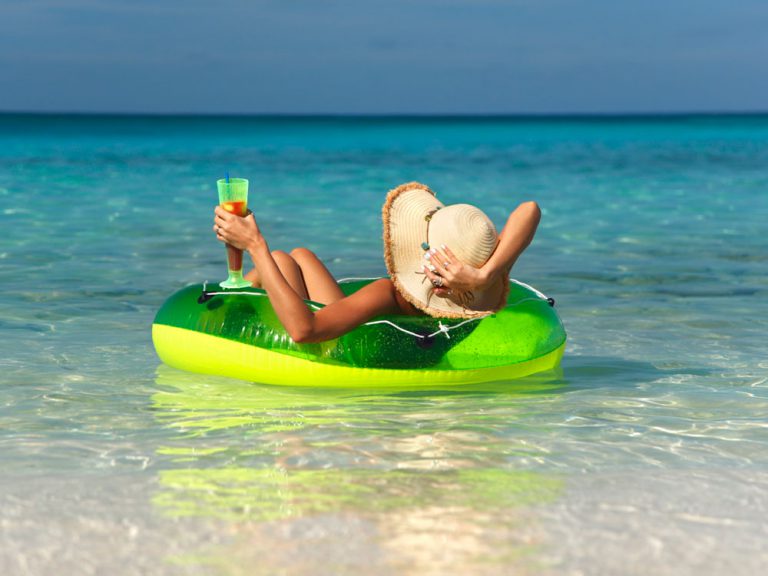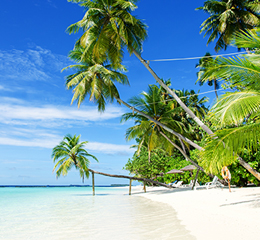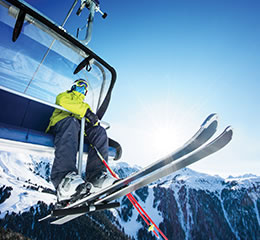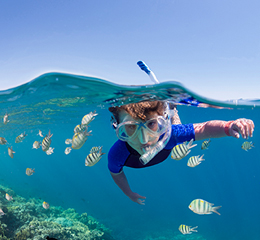Select a region (Please consider current travel restrictions)
Balearic Islands

Destination overview
Comprising four islands that float serenely in the glittering Mediterranean, it could be said that these islands have a theme. Mallorca is the senior island, combining a little of everything, from spectacular mountain scenery and hiking through to the standard seaside tourism. Ibiza is synonymous with clubbing and is the island that gave Europe the rave. Menorca is a haven of tranquillity, with splendid isolated beaches and coves and prehistoric monuments standing as taciturn reminders of how small we are in the grand scheme of things.
And then there is tiny Formentera, a chilled-out island where some people lose themselves for the entire summer, needing little more to keep them happy than beaches and sunset parties. Known as the tranquil little sister island of Ibiza, Formentera is blessed with white sandy beaches and beautiful turquoise waters. It is one of the last outposts of paradise in Europe and is just off the coast of Ibiza.
Every year masses of tourists invade the islands in search of a piece of this multi-faceted paradise. The total population of the islands does not amount to one million, but many times that number is involved in a round-the-clock airlift and disembarkation of sun and fun seekers from Easter to October.
Surprisingly, the islands have managed to maintain much of their intrinsic beauty. Beyond the high-rise resort hotels, bars and more popular beaches are Gothic cathedrals, Stone Age ruins, fishing villages, spectacular walks, secluded coves and endless olive and almond groves and citrus orchards. And a growing range of elegant, rural retreats and A-list eateries are attracting a range of visitors beyond the party-package crowd.
Mallorca
The largest of the Balearic Islands (3,640 square kilometres), the number of annual visitors today hovers around 10 million – most in search of sun, sand and sea and swamping the local island populace of some
781, 600 people (nearly half of whom live in the capital, Palma de Mallorca).
However, there’s much more to Mallorca than the beach. Palma de Mallorca (or simply Palma) is the main centre and the charming capital city. It is on the south side of the island, on a bay famous for its brilliant sunsets. Locals refer to what lies beyond the capital as the part forana, the ‘part outside’. A series of rocky coves and harbours punctuate the short south-west coastline. Offshore from the island’s western-most point is the large, uninhabited Illa de Sa Dragonera.
The spectacular Serra de Tramuntana mountain range runs parallel with the north-west coast and Puig Major (1,445 metres) is its highest point. The north-west coast is dominated by the Serra de Tramuntana mountain range and is a beautiful region of olive groves, pine forests and ochre villages with a spectacularly rugged coastline.
The north-east coast is largely made up of two bays, the Badia de Pollença and the larger Badia d’Alcúdia. The east coast is an almost continuous string of sandy bays and open beaches, which explains the densely-packed tourist developments. Most of the south coast is lined with rocky cliffs interrupted by beaches and coves, and the interior is largely made up of the fertile plain known as Es Pla.
Most of Mallorca’s best beaches are on the north and east coasts and although many have been swallowed up by tourist developments, you can still find the occasional exception. There is also a scattering of fine beaches along parts of the south coast.
Menorca
With a population 92,000, Menorca is the least over-run and most tranquil of the Balearic Islands. In 1993 UNESCO declared it a Biosphere Reserve, aiming to preserve environmental areas such as the Parc Natural S’Albufera d’es Grau wetlands and the island’s unique archaeological sites.
Its 216-kilometre coastline is fretted with relatively untouched beaches, coves and ravines. Inland, crossing its fields and green, rolling hills are an estimated 70,000 kilometres of dry stone walls. Some say the island owes much to Franco for not being over-run with tourist development. While neighbouring Mallorca went over to the Nationalists almost at the outset of the civil war, Menorca resisted. Franco later rewarded Mallorca with a construction free-for-all and penalised Menorca by blocking development.
The second-largest and northern-most of the Balearics, Menorca has a wetter climate and is usually a few degrees cooler than the other islands. Particularly in the low season, the ‘windy island’ is buffeted by tramuntana winds from the north.
Ibiza
For many, Ibiza (Eivissa in Catalan) means endless partying in Mediterranean macro-clubs. There is, however, another side to the island. The Greeks called Ibiza and Formentera the ‘Islas Pitiusas’ (Islands of Pine Trees) and about half the island (especially the comparatively unspoilt north-east) remains covered by these thick woods. Alongside hardy pines, the most common crops are olives, figs and almonds and away from the main resorts and towns, the island has a gentle rural charm.
In 1956, Ibiza boasted 12 cars and in the 1960s the first hippies from mainland Europe began to discover its idyllic beaches. A mixed World Heritage Site because of Ibiza City's architecture and the island's rich sea life, Ibiza soon latched on to the money-spinner of bulk tourism. Today the resident populace of 117,700 watches on as millions (more than four million passengers annually pass through its airport) visit S'Illa Blanca (The White Island) each year.
Birthplace of the rave, Ibiza has some of Spain's most famous clubs and bars a-plenty. But coastal walking trails, woods and quiet (if not deserted) beaches allow you to elude the club-style madness, as well.
Like all Mediterranean regions, the Balearic Islands have been making wine all through the ages. The different civilisations that have passed through the islands brought with them knowledge about winemaking, which is currently enjoying a revival. Cutting-edge techniques are combined with ancestral traditions to produce top-quality wines that boast a number of protected denominations of origin and have won the highest honours at international fairs and competitions.
The Balearic Islands is just another part of Spain that should be included on any itinerary. These beautiful islands will have something for all tastes and the sheer beauty of each island will be worth the visit.
DAE Resorts in this Destination
Ready to go more places?
Discover where 7Across members are exploring.
Browse below to see some of the resorts other members have recently booked and spark your curiosity.
- Exchange
- Bonus week
- Rental

































